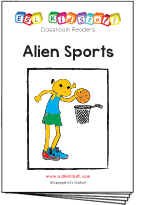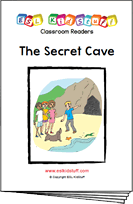Sports lesson plan
Stand-alone lesson ESL kids lesson plan
Lesson plans for ESL kids teachers
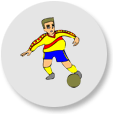
Sports
In this lesson students talk about playing different sports using the structure “I play / I don’t play …“. They play lots of fun sporting activities, sing a song, talk about sports equipment and read a funny story.
Members get accompanying flashcards, worksheets, song and classroom reader.
Download materials:
Our lesson plans are FREE!
Sign up for accompanying:
✔ worksheets
✔ homework sheets
✔ craft sheets
✔ flashcards
✔ song downloads & videos
✔ classroom readers & videos
Click to see lesson details, materials and supplies
Time: 40 mins – 1 hour
Objectives: Talking about playing different sports.
Structures: “What sports do you play?”, “I play ~” and “I don’t play ~”, “To play (tennis) you have to (hit a tennis ball).”
Target vocabulary: sports, play, [hide_on_uk]soccer[/hide_on_uk][hide_on_us]football[/hide_on_us], tennis, golf, basketball, baseball, volleyball, rugby, badminton, ball, kick, hit, throw, bounce.
Lesson materials
Flashcards:
- [hide_on_uk]soccer[/hide_on_uk][hide_on_us]football[/hide_on_us], tennis, golf, basketball, baseball, volleyball, rugby, badminton
Printables:
- Let’s play sports! worksheet
- Sports vocab cut outs worksheet
- Sports match up or Can you play …? worksheet (for homework)
- Reader worksheet
- What sports do you play? song poster
Songs:
- What sports do you play?
Readers:
- Alien sports
Additional materials:
- Sports vocab crossword
- Sports vocab word search
- Do you like sports?
Supplies:
- [hide_on_uk]colored[/hide_on_uk][hide_on_us]coloured[/hide_on_us] pencils
- balloons
- bean bag balls or small soft balls
- a waste paper basket or a cardboard box
- a length of rope
- Blu-Tack or something to stick flashcards on the board
- board with marker / chalk
- device to play the song on
This is a lively lesson which introduces the phrases “What sports do you play” and “I play ~”. During the lesson you’ll have a lot of fun playing different sports.
Lesson procedure:
Warm up and maintenance:
The beginning of your lesson is extremely important: this is where you set the tone of your lesson and get everyone in the right frame of mind for learning English. It is also an opportunity to check homework and review previous lessons.
Click for warm up suggestions for the start of your lessons
These activities can be done in the following order at the start of your lesson:

1. Greetings and name tags
Greet the students by name as they enter the classroom and gesture for them to sit down. Before class prepare some blank name tags (stickers or pin-on tags). Give these out and have everyone write their names and put their tags on. If you use pin-on tags, you can keep and give out every class.

2. Homework check
Check each student’s homework set in the last lesson. Ask each student some questions about their homework worksheet (e.g. “what [hide_on_uk]color[/hide_on_uk][hide_on_us]colour[/hide_on_us] is it?”), give lots of praise, and then put some kind of mark on the homework sheet (e.g. a sticker, a stamp or draw a smiley face). Finally, tell your students to put their homework back into their bags.
3. Review past lessons
Reviewing past lessons is very important – students need constant practice of new vocab, structures, songs, games and so on. Always review parts of your last lesson as well as some parts from other previous lessons. You can spend 5-10 minutes reviewing – it’s fine to recycle games and activities from your past lessons to review as kids enjoy playing familiar games (although be careful not to play a game to death!). See the section “Other ideas to include in your warm” below for ideas.
You can also include review activities in the main body of your lesson. Kids can have short attention spans so it’s good to be able to pull out lots of activities during different stages of the lesson.
Other ideas to include in your warm up:
Ball pass questions
This is good to review questions from previous lessons. Get everybody standing in a circle.
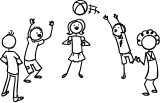
Round 1:
Take a ball and hold it and say, “My name is (you name)”. Then throw the ball to one student and say, “What’s your name?”. Students throw the ball around randomly, saying their names and asking for names.
Round 2:
This time ask a review question, e.g. “How many tables are there?”. Then throw the ball to a student who should answer, “There are (6) tables”. Help if necessary. Then that student throws the ball to another student and asks a “How many …?” question. Continue so everyone has a go. You can have multiple rounds with different topic questions.

Play “Spin the bottle”
Sit students in a circle with a bottle in the middle. Teacher spins the bottle. When it stops spinning the student it is pointing to has to answer a question. If the answer is correct then that student can spin the bottle. This is a good class warm up activity (e.g. How are you? What’s your [hide_on_uk]favorite[/hide_on_uk][hide_on_us]favourite[/hide_on_us] food? How’s the weather today?, etc.

Play “Vocabulary basketball”
This is a fun game which reviews vocabulary from previous lessons. You will need a basket (a trash can) and 2 balls (or 2 pieces of A4 paper scrunched up into balls).
Form 2 teams and line them up so that two players from each team are facing the front with the basket in front of them. Let both players throw their ball – if they get their ball into the basket they can try and win a point by giving the correct answer to a question the teacher asks. This can be an actual question (e.g. What are you wearing?) or a flashcard (What’s this?). Then they go to the back of the line. At the end, the team with the most points is the winner!
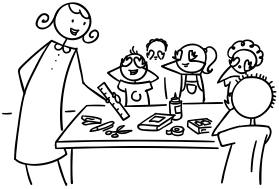
Play “What’s missing?”
This is a fun review memory game – students will have to try to remember review objects from previous lessons (e.g. classroom stationery). Lay the objects out on a table for all to see. Allow the students a minute to memorize the positions of the objects. Remove an object and hold it behind your back. Say, “Open your eyes!” – the first student who can shout out the missing object wins a point for his/her team. Play for all the objects.
Finally, calculate which team has won the most points and give them a round of applause.

Play “Quiz game show”
This is a fun quiz game, like a simple version of a TV game show. Draw some circles on the board and randomly write numbers 1, 2 or 3 in each circle. These will be points.
Put students into teams. Then ask the first team to choose a number – 1 is an easy question (e.g. “Do you like bananas?”) and 3 is a difficult question (e.g. point at a clock and ask, “What time is it?”). 2 will be in between in terms of difficulty. When the question has been answered correctly, erase that number circle. Play until all the number circles are gone – the team with the most points is the winner!
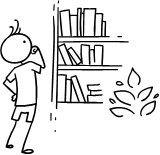
Read a classroom reader again
As you progress through the lessons you will start to build up a catalog of classroom readers (see our Readers download page at https://www.eslkidstuff.com). Kids love going back to old stories and reading through them again. Invite a student to pick a classroom reader and read through it as a class. Make the story as interactive as possible by asking questions (e.g. what [hide_on_uk]colors[/hide_on_uk][hide_on_us]colours[/hide_on_us] there are, the names of different objects, etc.) and getting students to speculate what is going to happen next in the story.

Talk about the weather (do after you have taught the weather lesson plan).
- Prepare a weather board. Before the first class prepare a piece of cardboard and cover it with felt – you are going to pin this to the wall. If you can, try and get blue felt (to represent the sky). Write at the top in large letters, “How’s the weather today?”. Below that write “Today it’s”. Cut out weather pictures (such as our weather flashcards) and stick some velcro on the back. Arrange the weather pictures around the edge of the board and then put the board on the wall of your classroom. You can now use this weather board at the beginning of every lesson.
- Ask about the weather. Ask, “How’s the weather today?” and have students put up their hands. Allow one weather condition per student (e.g. “It’s rainy”) and have each student come up and put a weather picture on the weather board.
- Introduce more weather vocabulary. Depending on weather conditions, you can introduce more weather words (with pictures … you can get students to draw them), such as:
- stormy
- misty
- showery
- freezing
- humid
- frosty
- icy
- drizzly
New learning and practice:
1. Introduce and play sports
As the lesson is sports themed we are going to do lots of fun sports activities. Make sure all of the desks and chairs are moved to the side of the classroom.
- You’ll need the following sports flashcards: [hide_on_uk]soccer[/hide_on_uk][hide_on_us]football[/hide_on_us], tennis, golf, basketball, baseball, volleyball, rugby, badminton
- You’ll also need lots of review flashcards from previous lessons
- You’ll need the following equipment: balloons, bean bag balls or small soft balls, a waste paper basket or a cardboard box, a length of rope
Start by dividing the class up into teams (for small classes make 2 teams, for larger classes make up to 4 teams). Get each team to come up with a team name and then elicit the team names and write across the top of the board (this will become the score board).
During this part of the lesson students will compete in a number of sports and win points for their team.

[hide_on_uk]Soccer[/hide_on_uk][hide_on_us]Football[/hide_on_us]
First, stick the [hide_on_uk]soccer[/hide_on_uk][hide_on_us]football[/hide_on_us] flashcard onto the bottom of the board and ask, “What sport is this?”. Elicit “[hide_on_uk]Soccer[/hide_on_uk][hide_on_us]Football[/hide_on_us]”. Then say, “I like playing [hide_on_uk]soccer[/hide_on_uk][hide_on_us]football[/hide_on_us]. Do you like playing [hide_on_uk]soccer[/hide_on_uk][hide_on_us]football[/hide_on_us]?”. Hopefully this will elicit some positive responses. Then stand up and say, “Ok, let’s play [hide_on_uk]soccer[/hide_on_uk][hide_on_us]football[/hide_on_us]!”.
Get everybody to stand up and form a line, each student behind the other, one line per team. At the other end of the classroom make a small goal (use two chairs or cushions for goal posts). Place a balloon a few meters in front of the goal – far enough so that when kicked makes it possible to score but not too easy. Hold up a review flashcard – the first student in the first team has to say the vocabulary correctly to have a shot. If correct, let them run up and kick the balloon. A goal earns a point (write on the score board).
Play until at least each student has had a chance to shoot. Then get everyone to sit down and review the team scores (we are not finished yet!).

Tennis
Next, place the tennis flashcard on the board and elicit it. This time we are going to play “Head tennis” with balloons.
Pair up 2 students from opposing teams and have them stand facing each other. They then have to head the balloon between each other – the last player to head the balloon wins (for younger students, patting the balloon is fine). The winner has to then answer a question to win a point for their team (e.g. What’s your name? How old are you?, etc.). Play until everyone has had a go, then sit everyone down and review the team scores.

Golf
Same as above with eliciting the flashcard. This time we Introduce and play “Pencil golf”.
Put students in pairs from opposing teams and have them face each other in the middle of the classroom with a pencil each. Give each pair a small bean bag ball or soft ball. Players take turns to hit the ball towards the opposite wall – therefore each student will compete to hit the ball in a different direction – however, as they are only using pencils the balls won’t travel far each hit! Give a time limit of 2 minutes. After 2 minutes, the student from each pair who is closest to his/her wall is the winner.
Now, the winner will have to say the correct vocabulary for a review flashcard to win a point for their team. Then sit everyone down and review the team scores.

Basketball
Same as above with eliciting the flashcard. This time we are going to play “Shoot the basket”.
You’ll need a waste paper basket or just a cardboard box. Also, take a piece of paper and screw it up into a ball. Get everybody to stand up and form a line, each student behind the other, one line per team. Put the basket at the other end of the classroom.
Hold up a review flashcard – the first student in the first team has to say the vocabulary correctly can take a shot at the basket with the screwed up paper ball. A successful shot earns a point (write on the score board). Play until at least each student has had a chance to shoot. Then get everyone to sit down and review the team scores.

Baseball
Same as above with eliciting the flashcard. This time we are going to play “Balloon baseball”.
Have each team line up – everyone is a batter and the teacher is the pitcher. Stand in front of the first student in the line and ask a question (e.g. Where do you live?, What is your [hide_on_uk]favorite[/hide_on_uk][hide_on_us]favourite[/hide_on_us] food?, etc.). If the student answers correctly pat the balloon towards the student. S/he has to hold their hands together and swing and hit the balloon (like a baseball swing). A successful hit wins a point. Any hit that bounces against a classroom wall wins an extra point for a home run!
Play until at least each student has had a chance to bat. Then get everyone to sit down and review the team scores.

Volleyball
Same as above with eliciting the flashcard. This time we are going to play “Balloon volleyball”.
Put students in pairs from opposing teams and have them face up with a length of rope separating them (you can lie the rope right across the classroom and have students stand either side as they play). Give each pair a balloon. They pat the balloon to each other and try to stop it hitting the floor – whoever lets it drop loses a point.
Let everyone play for a few minutes, then ask who the winner of each game is. To win a point for their team they must answer a review flashcard correctly. Then get everyone to sit down and review the team scores.
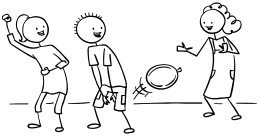
Rugby
Same as above with eliciting the flashcard. This time we are going to play “Rugby balloon pass”.
In rugby you have to pass the ball backwards, so we are going to play a game passing a balloon backwards. Get each team to line up, each student behind the other. Give the player at the front of each team’s line a balloon. S/he must pass the balloon backwards to his team-mate over the head. The next player passes behind to his/her team-mate between the legs, and so on, over the head and between the legs. Each team must race against each other.
The team that gets the balloon to the last player wins a point. You can play this game a few times. Then get everyone to sit down and review the team scores.
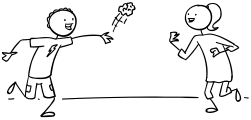
Badminton
Same as above with eliciting the flashcard. This time we are going to play “Badminton keep-ups”.
Put students in pairs from opposing teams. Give each student a screwed up paper ball. Each student has to compete against his/her partner to pat the ball up the most times before the ball hits the ground. Allow everyone about 2 minutes and then find out who managed to keep the ball up the most from each pair. To win a point for their team they must answer a review flashcard correctly.
Finally, get everyone to sit down and tally the final scores to find out which team is the winner. The winning team will get a special prize at the end (see point 7 below)!

2. Teach structures “What sports do you play?”, “I play ~”, “I don’t play~”
You should now have 8 sports flashcards on the board. Model the structures: point at the first card and say, “I play [hide_on_uk]soccer[/hide_on_uk][hide_on_us]football[/hide_on_us]” – while nodding your head. Then go to the next flashcard and say, “I don’t play tennis” shaking your head. Go through all the cards saying what you do and don’t play.
Now model with some students. Ask one student, “What sports do you play?” and help him/her go through the 8 sports saying what s/he does and doesn’t play. Do this with a couple more students so everyone gets the idea. Now in pairs, students ask and answer the question. Change pairs a few times until everyone has had plenty of practice.
3. Sing the “What sports do you play?” song
Get everyone to stand up and sing along to the song whilst they do the gestures. Either use the flashcards on the board to prompt the order of the sports in the song or use our song poster. Sing the song through a couple of times.
Lyrics for “What sports do you play?”
Chorus:
What sports do you play?
What sports do you play?
What sports do you play?
What sports do you play?
Verse 1:
I play [hide_on_uk]soccer[/hide_on_uk][hide_on_us]football[/hide_on_us] ([hide_on_uk]soccer[/hide_on_uk][hide_on_us]football[/hide_on_us]!),
I play tennis (tennis!),
I play golf (golf!),
I play basketball (basketball!).
Chorus
Verse 2:
I play baseball (baseball!),
I play volleyball (volleyball!),
I play rugby (rugby!),
I play badminton (badminton!).
Gestures for “What sports do you play?”
The gestures revolve around the actions for the different sports in the song:
– During the chorus have everyone sing and clap along.
– For the verses have everyone do the actions as they sing:
- [hide_on_uk]soccer[/hide_on_uk][hide_on_us]football[/hide_on_us]: kick an imaginary ball
- tennis: hit an imaginary tennis ball with an imaginary racket
- golf: swing an imaginary gold club
- basketball: bounce an imaginary basketball
- baseball: swing an imaginary baseball bat
- volleyball: smash an imaginary ball with your hand
- rugby: throw an imaginary rugby ball to the side
- badminton: smash an imaginary shuttlecock with an imaginary racket

[hide_on_uk]Short sample (members get full-length song):
[/hide_on_uk]
[hide_on_us]Short sample (members get full-length song):
[/hide_on_us]
4. Teach sports verbs and equipment vocabulary
On the board write: “To play [hide_on_uk]soccer[/hide_on_uk][hide_on_us]football[/hide_on_us] you have to __________ a [hide_on_uk]soccer ball[/hide_on_uk][hide_on_us]football[/hide_on_us]”. Elicit the missing verb and write “kick” in the blank.
Before class, cut out the words from the Sports vocab cut outs worksheet – enough for each group of students. In pairs, the students have to match the words (e.g. golf – hit – golf ball). As students are matching the words go around the class checking and asking questions.
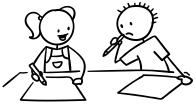
5. Do the “Let’s play sports!” worksheet
This worksheet practices the vocabulary from the last point.
Give each student a worksheet and circulate as everyone fills in the blanks.
6. Read classroom reader “Alien sports”
This story will tie everything together – you can practice talking about sports and sports equipment. Before class, download and print off the reader “Alien sports”. As you go through each page, point to the pictures and get each student to guess what sport each alien is playing – also elicit the sports equipment, for example:
Teacher: What sport do you think he is playing?
Students: Tennis?
Teacher: Let’s see (turns over page) … Yes, tennis! What is he hitting?
Students: A tennis ball!
Teacher: I play (or don’t play tennis). How about you Marta?
Student (Marta): I play tennis (or I don’t play tennis).
Get the students really involved in the reader by asking lots of questions (e.g. eliciting [hide_on_uk]colors[/hide_on_uk][hide_on_us]colours[/hide_on_us], clothes, body features with adjectives (e.g. the alien playing golf has a big eye) and other objects) and getting them to guess each sport. Encourage everyone to say which sports they do and don’t play.
After reading the story, give out a reader worksheet to each student and read through the story one more time (without stopping for questions, etc.) as students match up the aliens to the sports. Then go through the answers as a class.
Alternatively, watch our video version of the reader (Internet connection required).
7. Special prize for the winning team
The winning team from the sports competition at the beginning of the lesson can end the class by choosing one of the 8 sports for everyone to play again (no review flashcards necessary this time!).

Wrap up:
Assign homework: “Sports match up” or “Can you play …?” worksheet
Click for wrap up suggestions for the end of your lessons

1. Assign homework
Each week give out a homework worksheet for your students to take home. Hold up the homework worksheet and model how to do it. Give out the worksheets and say, “Put your homework in your bags”.

2. Do “Quick check”
Time to leave the class. Make sure everything is put away and the students have gathered their belongings. Have them line up at the door and place yourself between the door and the students. For each student check one new word or phrase, for example:
- hold up an object or flashcard (such as an item of clothing) and ask, “What’s this?”
- ask a question from the lesson (e.g. “Where do you live?”, “Do you like bananas?”, “Can you play chess?”, etc.)
When they give you the correct answer say goodbye and let them leave. If their answer is wrong, have them go back to the end of the line – they will have to try again once they reach the front!
Other lesson plans
Actions, verbs & tenses:
- Can – for ability
- Morning routines
- Daily routines & times of the day
- Actions – Present continuous
- Future plans using “going to”
- Past tense activities – Regular verbs
- Past tense activities – Irregular verbs: Part 1
- Past tense activities – Irregular verbs: Part 2
Adjectives:
- Describing people
- Describing things
- Comparing things (Comparative adjectives)
- Comparing things (Superlative adjectives)
Adverbs:
Alphabet:
Animals:
Body:
Classroom:
Clothes:
Colors:
Colours:
Directions:
Family:
Feelings & emotions:
Food:
Health & sickness:
Holidays & festivals:
Jobs:
Likes, dislikes & favorites:
Likes, dislikes & favourites:
- Likes & dislikes
- [hide_on_uk]Favorites[/hide_on_uk][hide_on_us]Favourites[/hide_on_us] and asking why
Nature & Our world:
Numbers:
Places & where we live:
Prepositions of location:
Pronouns:
Shapes:
Shopping:
Sports:
Time, days, months, seasons:
Toys:
Transport & travel:
Weather:


